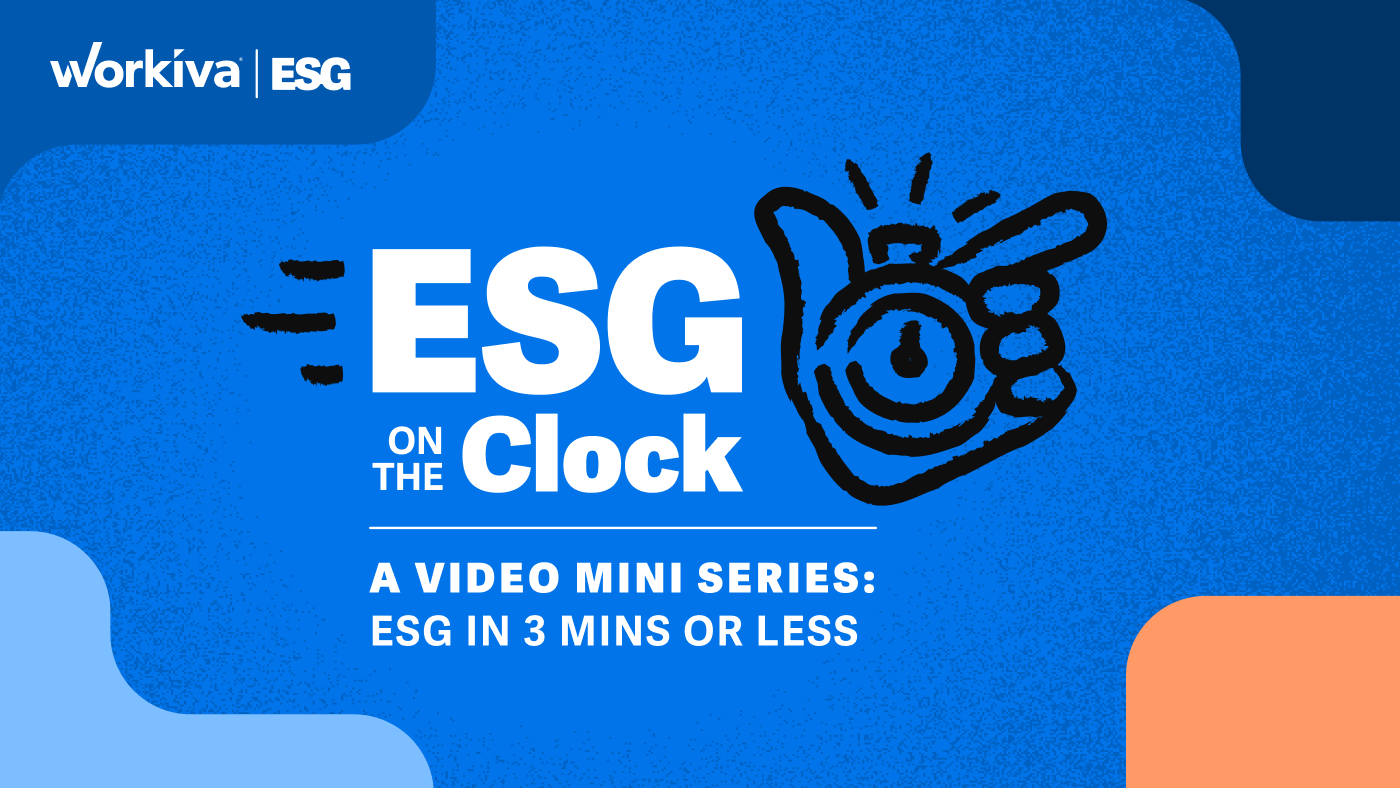Key Takeaways
ESG on the Clock is designed for those starting their environmental, social, and governance (ESG) journey.
In this video, Abhay Krishna, Director of Value Management at Workiva, discusses how companies can determine their ESG strategy in five steps:
- Figure out your why
- Do your research
- Do your materiality assessment
- Do a feasibility analysis
- Start small
S1 Episode 3: What is an ESG strategy? | Transcript
Abhay Krishna:
Hi, and welcome to another episode of ESG on the Clock. Today, we're going to look at how companies set their ESG strategies. I've seen it broken down in five steps.
The first step is to figure out what's your why. Are you doing ESG reporting to comply with regulations? Is it to meet investor demands? Is it to attract customers or employees? Each of those different reasons will lead to slightly different strategies.
Next step: Do your research. Understand what the various reporting frameworks are out there, understand the different regulations, and just look at what your peers are doing. That'll give you a good basis for understanding what you need to report, which is the next step.
Next step: Do a materiality assessment, which largely involves meeting with stakeholders—either internal or external—and understand what matters to them.
Unlike financial reporting, where most of the materiality assessment is a quantitative exercise, ESG materiality is a qualitative subjective exercise. So it's important to hear the voice of your stakeholders, figure out what matters to them, and make sure you're getting the most impactful, meaningful data points.
Fourth step is to assess what's feasible. While you may want to report all the metrics and all the data points that have been deemed to be material, you'll realize that some of the data quality or completeness is just not there. So find the data points where you have the most trust and confidence, figure out where it resides, and maybe start small.
That leads us to the fifth step. Work backwards and don't let perfection be the enemy of good when it comes to reporting. Get a report out this year, even if it's a limited number of data points, even if it's just for internal consumption that begins to start the discussions internally or with your stakeholders, and identify the metrics that matter and identify the impact that you're making with your disclosure.
So again, the five steps. Figure out your why. Do your research. Understand the regulation. Understand the frameworks. Understand what your peers are doing. Do your materiality assessment. Do a feasibility analysis, and then start small. Get something out there to begin the conversation.
Thanks again for spending time with us. Hope to see you on another episode.

Duration
2 minutes
